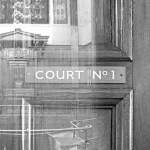Proof of debt plays a central role in liquidation, administration, and Part A1 moratoriums, enabling creditors to assert their claims and partake in the distribution of the insolvent estate’s assets. This article delves into the function and importance of proofs of debt, how decisions regarding these proofs can be contested, and the process for foreign creditors to lodge claims, especially under the Recast Insolvency Regulation.
The Role of Proofs of Debt in Insolvency Proceedings
In insolvency proceedings, a proof of debt is a formal statement submitted by a creditor to the liquidator or administrator, asserting the amount owed to them by the insolvent debtor. This process is crucial as it determines the validity and extent of the creditor’s claim against the insolvent estate, ensuring that the claims are considered during the distribution of assets.
Liquidation
In compulsory or voluntary liquidation, the liquidator invites creditors to submit proof of debt. This allows the liquidator to assess the total claims against the insolvent estate and determine how to distribute the available assets. Creditors must submit their proofs in a specified form, often accompanied by supporting documents such as contracts, invoices, and correspondence evidencing the debt. The liquidator then reviews these proofs to either accept, reject, or seek further information.
Administration
In administration, the process is similar but typically more streamlined. The administrator’s role is to rescue the company, achieve a better outcome for creditors than liquidation, or realise property to distribute to secured or preferential creditors. Proofs of debt are submitted to the administrator, who evaluates them in light of the company’s restructuring or winding-up plans. The administrator’s decisions on proofs of debt significantly influence the distribution of dividends to creditors.
Part A1 Moratoriums
The Part A1 moratorium provides companies in financial distress with temporary breathing space from creditor action while they seek to restructure. A moratorium for up to 40 business days can be obtained without creditor or court consent. During this period, creditors are invited to submit proofs of debt to establish their claims. While the moratorium is in place, the company’s directors remain in control, but a monitor oversees the process to protect creditors’ interests. Proofs of debt in this context help assess the company’s liabilities and inform the restructuring process.
Challenging Decisions on Proofs of Debt
Creditors can contest decisions made by liquidators or administrators regarding proofs of debt. This process is essential to ensure fairness and transparency in insolvency proceedings.
Grounds for Challenge
Creditors can challenge a decision if they believe the liquidator or administrator has:
- Incorrectly rejected or reduced their proof of debt.
- Accepted a proof of debt from another creditor that they believe is invalid or overstated.
- Failed to consider all relevant evidence supporting their claim correctly.
The Challenge Process
A creditor must apply to the court within a specified period to challenge a decision. The application must detail the grounds for the challenge and include any supporting evidence. The court will then review the decision, considering both the creditor’s arguments and the liquidator’s or administrator’s reasoning. If the court favours the creditor, it may order the liquidator or administrator to revise their decision accordingly.
Post-Brexit Cross-Border Insolvencies in the UK and EU
Since the UK departed from the EU, the law around cross-border insolvency proceedings has significantly altered, impacting the procedures and frameworks applicable to insolvencies, including proof of debt.
Pre-Brexit Framework
Before Brexit, cross-border insolvencies involving the UK and EU were governed by the EU Insolvency Regulation (EIR). The EIR facilitated streamlined and coordinated insolvency proceedings across member states by automatically recognising and enforcing insolvency judgments within the EU. This regulation aimed to maximise the value of insolvent estates, ensure fair treatment of creditors and prevent debtors from exploiting differing national laws to their advantage.
Post-Brexit Changes
With the UK no longer part of the EU, the automatic recognition and enforcement provisions under the EIR no longer apply. Instead, the UK must rely on a patchwork of international conventions, domestic laws, and bilateral agreements to manage cross-border insolvencies.
Recognition and Enforcement of Insolvency Judgments
Without the EIR, the UK must look to alternative mechanisms for recognising and enforcing insolvency judgments. One such mechanism is the UNCITRAL Model Law on Cross-Border Insolvency, which the UK adopted in 2006 through the Cross-Border Insolvency Regulations. This Model Law provides a framework for cooperation and coordination in cross-border insolvency cases but lacks the automatic recognition previously afforded by the EIR.
EU member states that have also adopted the Model Law can offer a degree of reciprocity, but this is not uniform across all EU countries. Consequently, insolvency practitioners must carefully assess the specific laws of each relevant jurisdiction when dealing with cross-border insolvencies.
Some EU countries may have provisions within their domestic insolvency laws that allow for the recognition of foreign insolvency proceedings. However, these provisions vary widely, necessitating a case-by-case analysis by insolvency practitioners.
Key considerations for insolvency practitioners to consider when dealing with cross-border insolvency matters include:
- Jurisdictional Challenges: Determining the appropriate jurisdiction for initiating insolvency proceedings has become more intricate. Practitioners must evaluate where the debtor’s centre of main interests (COMI) is located and the relevant legal implications.
- Coordination Between Jurisdictions: Effective coordination between UK and EU jurisdictions is essential to avoid conflicting judgments and maximise the value of the insolvency estate. This may involve seeking recognition under the Model Law or relying on domestic provisions in EU countries.
- Communication with Creditors: Clear communication with creditors regarding the procedural differences and potential delays in cross-border insolvency cases is crucial to managing expectations and mitigating disputes.
- Legal Representation: Engaging local legal counsel in relevant EU jurisdictions can help traverse domestic insolvency laws’ specific requirements and nuances.
Final words
Proofs of debt are a fundamental aspect of insolvency proceedings, playing a critical role in liquidation, administration, and Part A1 moratoriums. They allow creditors to assert their claims and partake in the distribution of the insolvent estate’s assets. The ability to challenge decisions on proofs of debt ensures fairness and transparency, providing a recourse for creditors who believe their claims have been improperly assessed. Regarding foreign creditors, insolvency practitioners must adapt to the absence of automatic recognition and enforcement mechanisms previously available under the EIR.


